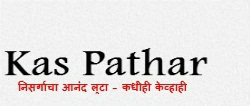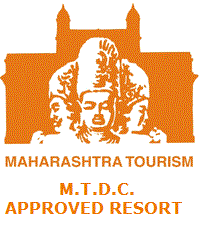Kaas Plateau
The Kaas Plateau, also known as the Kaas Pathar or Kas Sadas, is a plateau situated 25 kilometres west from Satara city in Maharashtra, India.
It falls under the Sahyadri Sub Cluster of the Western Ghats, and it became a part of a UNESCO World Natural Heritage Site in 2012
Kaas Plateau
Location Satara, Maharashtra, India Nearest city Satara, Pune, Kolhapur Coordinates17°43′12″N 73°49′22″EArea10 km2 (3.9 sq mi)Governing body Ministry of Environment and Forests, Government of India www.kas.ind.in
UNESCO World Heritage Site
Official name Natural Properties – Western Ghats (India)Type Natural Criteriaix, xDesignated2012 (36th session)Reference no.1342State PartyIndia RegionIndian subcontinent
It is a biodiversity hotspot known for various types of seasonal wild flowers bloom and numerous species of endemic butterflies annually in the months of August and September.
The plateau is situated at an altitude of 1200 metres and is approximately 10 square kilometers in area.
Kaas has more than 850 different species of flowering plants of which 624 are listed on the IUCN Red List.
These include orchids, shrubs such as the Karvy, and carnivorous plants such as Drosera Indica.
Cynotis tuberosa
Murdannia lanuginosa
Ceropegia vincaefolia (local known as Kandilpushpa/Kandil kharchudi)
Kaas plateau is a plateau located near Satara. It is situated high hill plateaus and grasslands turns into a ‘valley of flowers’ during monsoon season, particularly from August to early October. Kaas Plateau has more than 150 or more types of flowers, shrubs and grasses. The orchids bloom here for a period of 3–4 weeks during this season.
Kaas plateau is a World Natural Heritage site.To control possible damage by tourists, the number of visitors to the plateau has been restricted to 3,000 per day.
In September, some of the most common flowering plants are Eriocaulon manoharanii, Pogostemon deccanensis, Senecio grahamii, Impatiens oppositifolia and Dipcadi montanum.
The plateau experiences a natural cycle of extreme conditions, with wet water-logged cool monsoons, very dry barren hot summer (45 C) and dry winter (5 C). The soil is a thin layer on top of Deccan rock, with varying quality of nutrients. The annual cyclic ecosystem here, and nearby similar but smaller lateritic plateaus, has adapted to these conditions.
Geography
Kaas plateau is a plateau located around 25 km from Satara. There are two ways to reach Kaas. one the more direct way from Satara and another from Tapola via the link road connecting Mahabaleshwar and Panchgani to Kas Pathar.
Kas plateau is 20 km away from Northern part of Koyana Sanctuary. The major portion of the plateau is reserve Forest. Kaas lake (built 100 years ago) is a perennial source of Water supply for western part of Satara city by gravity.
The flora of Kaas are around the locality of that area. The plateau is largely formed of basalt which is directly exposed to atmosphere. The basalt rock is covered by a thin cover of soil formed due to erosion and has accumulated a layer of not more than an inch or so. This soil is neither black nor lateritic
. At certain places water gets accumulated because of uneven surface. The plants growing on Kas plateau are typically of herbaceous nature of like grasses.
The small shrubs and trees are located at the periphery of the plateau at Kaas plateau.
The various distances of Kas plateau are as follows:
From Satara – 25 km
From Pune – 125 km
From Mumbai – 280 km
From Kolhapur – 150 km
Bio-diversity on Kaas plateau
Kaas Plateau is rich in its Bio-diversity. Many species are observed on plateau which are new to the Botanical Science. Many of the endemic, endangered plants are found on Plateau. More than 850 species of flowering plants are reported on the plateau. 624 species have entered in the Red Data Book. Out of these 624 species, 39 are found only in Kaas Region.
Other attractions
Kaas lake is on the south of the Kaas Plateau and is surrounded by dense forest. It lies between Sajjangad fort and the Kanher Dam. Koyna project is around 30 km towards the south of Kaas Lake.Vajrai Waterfall is also near from Kaas which is one of India’s highest waterfalls.
Flowers
The following is a list of some of the flowers found on at Kaas:
Adenoon indicum (local name mothi sonaki)Aerids maculosumAponogeton satarensis (local name Vaytura)Arisaema murrayi (local name Pandhara Sapkanda)Begonia crenataCeropegia jainii (local name Somada)Ceropegia vincaefolia (local name Kandilpushpa/ Kandil kharchudi- कंदिल खर्चुडी)Ceropegia mediaChlorophytum glaucoides (local name Musali)Cyanotis tuberosa (local name Abhali)Dendrobium barbatulum (Bharangee)Dioscorea bulbifera (local name dukkar kanda)Dipcadi montanum (Deepkadee)Drosera burmanni (local name Davbindu)Drosera indica (local name Gavati Davbindu – गवती दवबिंदू)Elaeocarpus glandulosus (local name Kaasa)Exacum tetragonum (local name Udi chirayat)Flemingia nilgheriensisHabenaria grandifloriformisHabenaria heyneana (local name toothbrush Orchid)Habenaria longicorniculataHabenaria panchganiensisHitchenia caulina (local name Chavar)Impatiens oppositifoliaIpomoea barlerioidesLinum mysurense (local name Undri)Memecylon umbellatum (local name Anjani)Murdannia lanuginosa (local name Abolima)Murdannia simplex (local name Nilima)Nymphoides indicum (local name Kumudini)Oberonia recurvaParacaryopsis coelestina (local name Nisurdi)Paracaryopsis malbarica (local name Kali Nisurdi)Pinda concanensis (local name Pinda)Pogostemon deccanensisRotala fimbriataRotala ritchiei (local name Paner)Senecio bombyensis (local name Sonki)Senecio grahami / bombayensis (Sonakee – सोनकी)Smithia agharkariiSmithia hirsute / hirsuta (local name Kavala – कवळा)Trichosanthes tricuspidata (local name Kondal)Utricularia purpurascens (Seetechee aasawe – सीतेची आसवे)Vigna vexillata (local name Halunda)Wild Brinjal flower (kaaTe ringaNii – काटे रिंगणी)
Kaas plateau Hotels and Resorts Booking / Kas Pathar Hotels and Resorts Booking
Online Booking and Registration For Kaas Plateau at.Kas Village.
Hotels & Resort
The Kaas Village Resort (Homestay) near Kas Lake Wives, very Cool, Romantic, under Forest Green Place. offers a golden Opportunity for tourists to spend a night in the village.
Experience village life along with delicious home cooked food & Nice Kaas Wildlife Sanctuary Tracking, Camping, Stay, Homely Food nearby Kaas Village Resort At Kas Lake Wives .
How To Reach
Mumbai and Pune to Satara by Transport Or Car
Get Satara City to Kas Village Resort 22 km.
Other Options for Google map to Kaas Village Resort Directions
Nearby visited tourist attraction :
Vajrai Waterfall ( 852 ft )
Kas Lake
Kas Pathar Valley of flowers
Kaas PLATEAU Of FLOWERS
Kaas Wildlife Sanctuary
Bamnoli Boting
Koyna Backwater
Koyna River camp
Tapola River Camp
Kas Pathar hotels
Vasota tracking fort
Koyna Wildlife Sanctuary
Mahabaleshwer hill station
thoseghar Waterfall & Sajjangad.
For More Details Reservation Contact : Online registration and Booking for Kas Pathar
Kaas Village Resort
At Kas, Kas Bamnoli road,
Kas Lake, Tal – Javali,
District – Satara.
Mr. Vitthal Call – 9594934666, 8291008666,
Bajrang – 9320077606
Satish -7506533596
Email: kaaspatharresorts@gmail.com, booking1234kaspathar@gmail.com, website : www.kaas.ind.in, www.kaspatharholiday.com
कास पठार – निसर्गाचा आनंद लुटा केव्हाही कधीही…! Kas Pathar Holiday – Any Reason Any Season





















